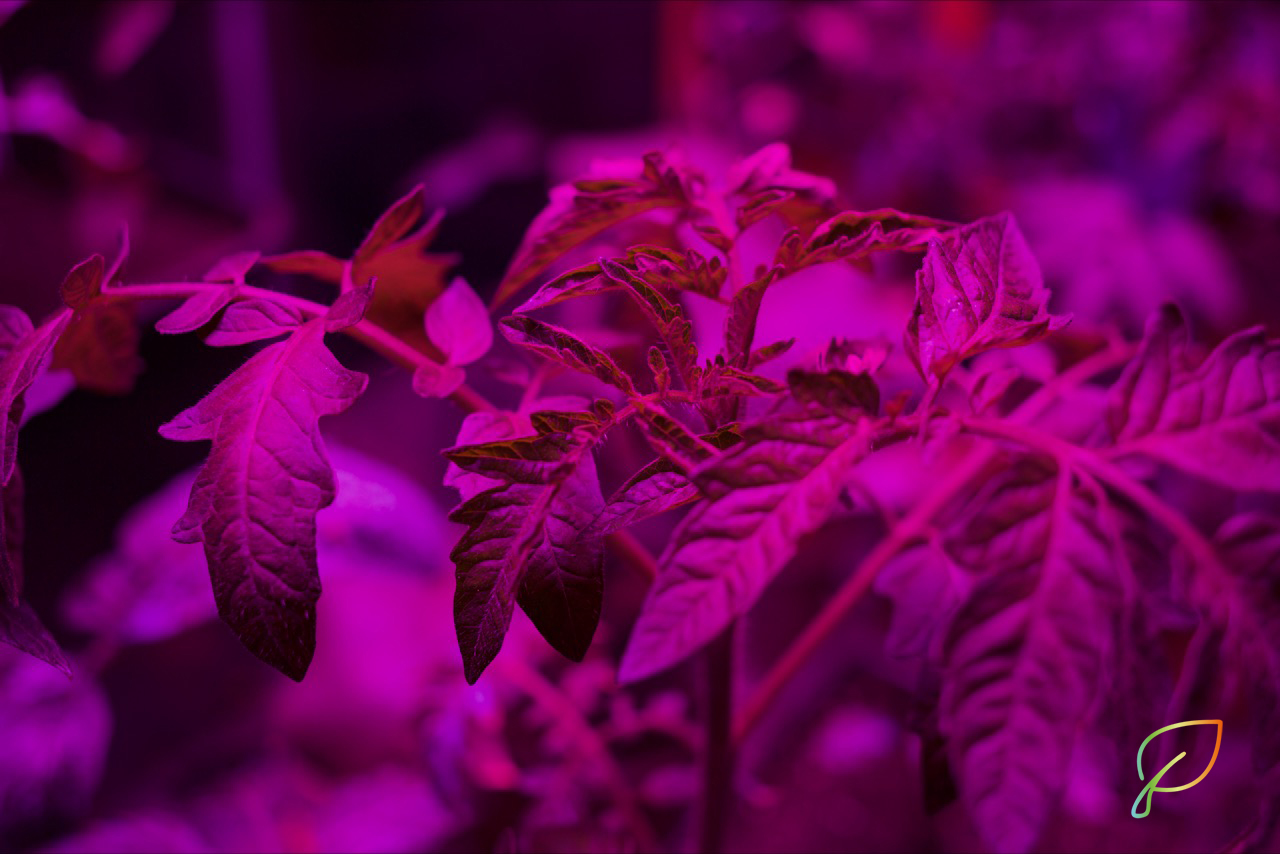Sheltered tomatoes cultivation and LED lighting
The use of LED lighting is beneficial for your crops
Fruit and vegetable growers are more and more aware of the different light spectra impact on plants.
In horticulture, one has to understand the needs of his plants in the best way possible in order to meet them as accurately as possible, by maintaining the most ideal balance possible between lighting, temperature and water supply.
LED lighting for sheltered tomatoes cultivation has many advantages compared to traditional culture whether it is in hydroponic culture in closed and / or bioclimatic greenhouse. Fruits and yields are better than traditional outdoor crops, and harvest periods can spread throughout the year. In greenhouses, tomato plants are usually set up in October and removed late August.
The different wavelengths emitted by electroluminescent diodes have an influence on the shape, acidity, aroma, terpene content and hue of the fruit. Indeed, tomato plants will be essentially receptive to red and blue spectra that have an impact on photosynthesis but also on their morphogenesis. Moreover, LEDs are resistant to difficult atmospheric conditions and can easily support the 90% humidity that is found in the culture under greenhouse.
LED is eco-responsible
LEDs allow to cultivate good quality and eco-responsible fruits by reducing the use of phytosanitary products. LED technology development is perhaps the greatest innovation in horticulture since tractor invention.
Since heat emission is very low, LED lamps can be placed not only above plants but also very close to plants even between them to bring light, where natural light can not easily pass through.
A low intensity blue beam will keep them in the best conditions.
It is possible to combine use of organic nutrients and growing LED to obtain a product that will have more taste and better nutritional values.
 Tomato plants under LED lighting
Tomato plants under LED lighting
Development of tomato under LED
Tomato seeds germinate mostly after 5 to 12 days. Young shoots should be placed at 10 to 15 cm from LED lights. Lighting is adjusted from 18 to 24 hours per day to promote vegetative growth, once the height of 15 cm is reached, feet are ready to be carefully transplanted.
Tomato is considered a model plant in genetics, making it the perfect example for measuring the positive impact of LED lights.
Flowering is one of the most delicate parts in growing tomatoes indoor. Some tomato plants produce fruit in 60 days and others take up to 80 days, from the time you start flowering phase. Harvest is considered when the fruit turns from light red to dark red, sign of its maturity.
If you grow plants in hydroponic system, nutrient solution is provided to your plants on a regular basis. If you grow sheltered tomatoes in soil or in a soil-free mix, your plants should be watered with nutrient solution every 2 to 4 weeks, depending on their dietary needs.
Lighting and heating are working together to reduce the need for ventilation, reducing the total energy requirement up to 35%, which is beneficial to the environment.
Horticultural LED technology is an excellent complement to daylight for greenhouse cultivation. The emitted spectrum is optimized for horticulture. Light is the main power supply for plants, LED lamps maximize the emission of most absorbed colors.

The Horticoled team can accompany you in all your project culture. From simple greenhouse cultivation, to automated multi-layer cultivation according to your farming goals and budgets.




